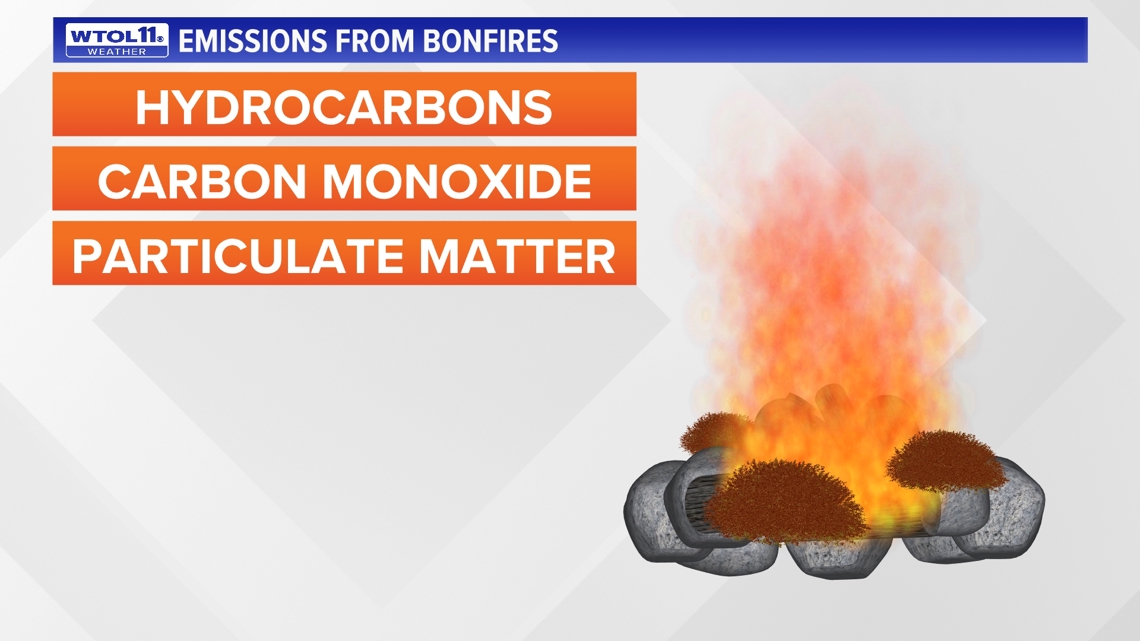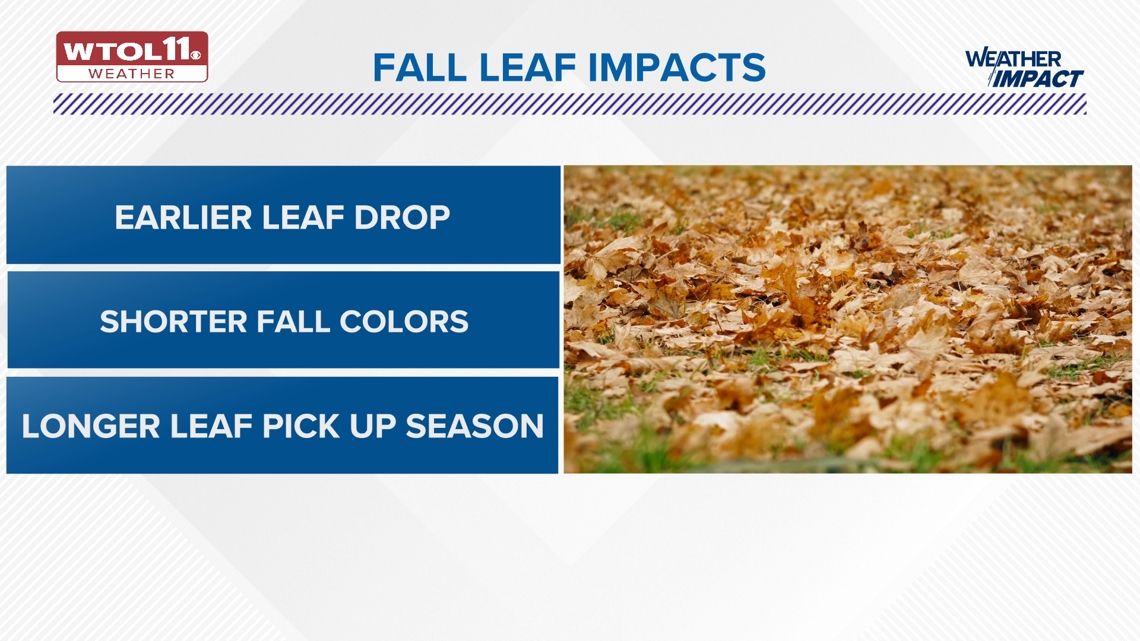TOLEDO, Ohio — The fall season is quickly wrapping up and, as the winter chill inches closer, the life cycle of fall colors will end, leaving trees with only their branches left to stand.
Throughout each year, trees undergo rapid changes daily but breaking them down by each month and each season helps us truly see the distinct differences you see in trees throughout the year.
Most people genuinely enjoy what fall has to offer over other seasons.
The winter is harsh and cold and keeps a lot of life in nature from growing. Spring welcomes nature back to its truest form, bringing spring buds and hoping trees and gardens will return to their truest form.
Summer is when everything can truly shine with warm and wet conditions that help trees and plants thrive in the best way. Summer is when we can typically get out our heaviest rain and warmest temperatures.
Many say that fall brings a bit of comfort and enjoyment to the outdoors when the weather gets cooler and leaves start to change colors. This welcomes some of the best-looking views across the entire country.
Fall foliage season is such a special time of the year because peak colors only last about a week. Soon after, the process of leaves falling off trees happens. On this week’s WTOL 11 Weather Impact, we are breaking down why exactly that happens.

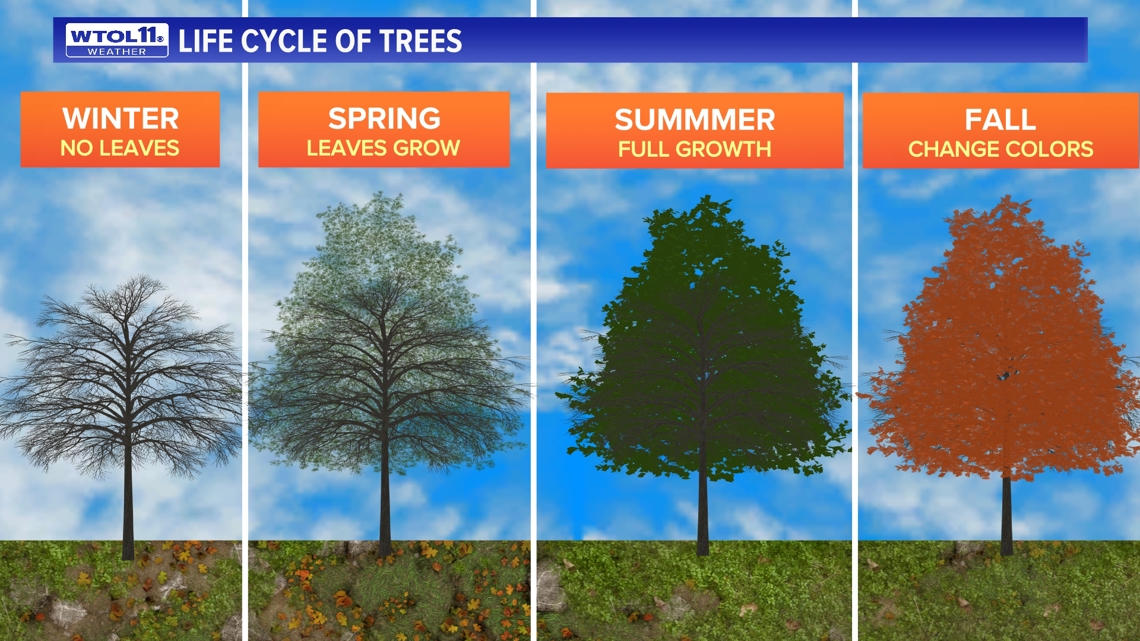
Peak of fall colors
We are currently at peak fall colors throughout northwest Ohio and southeast Michigan, and this is truly the time of year when we see the most vibrant colors of the year across the trees.
Before long, the start of leaves falling truly becomes a reality because cooler temperatures and less daylight start to become more common.
A report done by Explore Fall suggests that, "over the course of a month or two, the concentrations of chlorophyll diminish, allowing less concentrated chemicals such as anthocyanin and carotenoids to dominate, turning the leaf red, yellow or orange."
It can be hard to identify one overall peak in autumn leaf vibrancy, though, because different tree species experience these changes at different times.
"For most of the United States, peak fall color arrives in October," Explore Fall notes. "This is when wide swaths of the Northeast, Midwest and Western states are aglow with bright fall foliage, and more than 80% of travelers make their fall foliage trips."

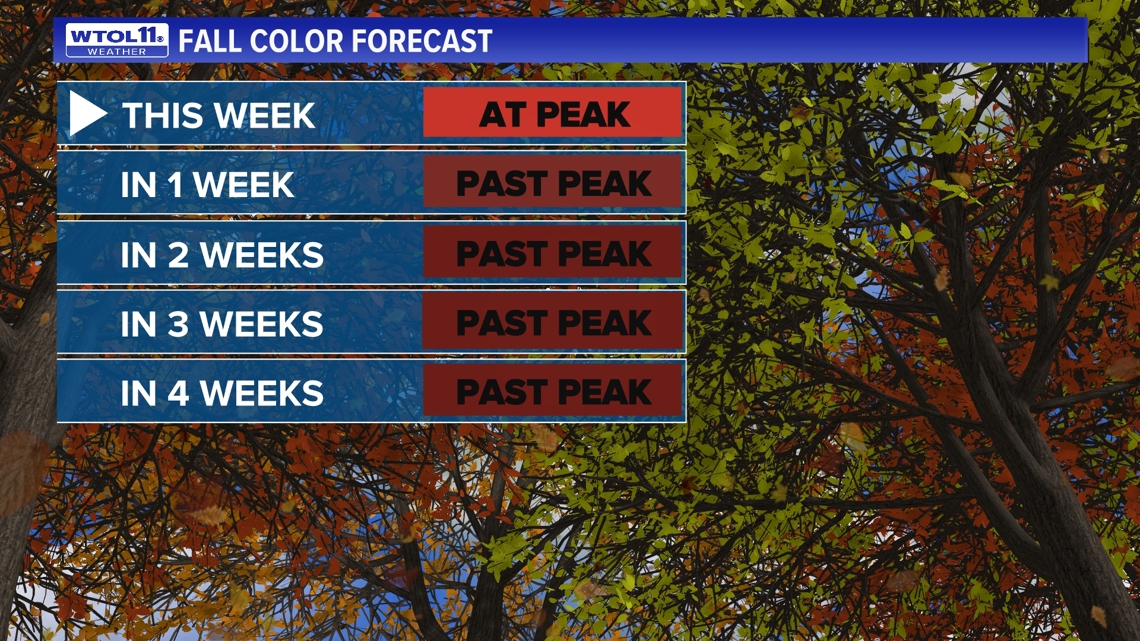
Why do trees lose their leaves?
What leads to leaves falling naturally is windy conditions, but what starts this process is cooler temperatures and shorter daylight.
Forestry and Land Scotland indicates on its blog that "by the time autumn comes around, trees have been busy generating and storing energy from sunlight for several months."
This means that trees work hard all year to prepare for winter by gathering up that energy and sugar that will sustain them in the cold, darker months.
The cooler temperatures in fall halts chlorophyll production within the leaves and that means other chemicals take its place, leading to the change in colors.
"As chlorophyll reduces, it leaves an abundance of carotenes which are yellow. This yellow has been in the leaves all year, but superseded by the green – in autumn, it finally gets a chance to show itself," states Forestry and Land Scotland. "If the temperature stays above freezing, anthocyanins are produced which bring about reds and pinks."
Trees go through this process to protect themselves through the harsh winter months. If those leaves were to remain on the trees, it stops trees from keeping that insolation and warmth that they need to survive during the winter months.

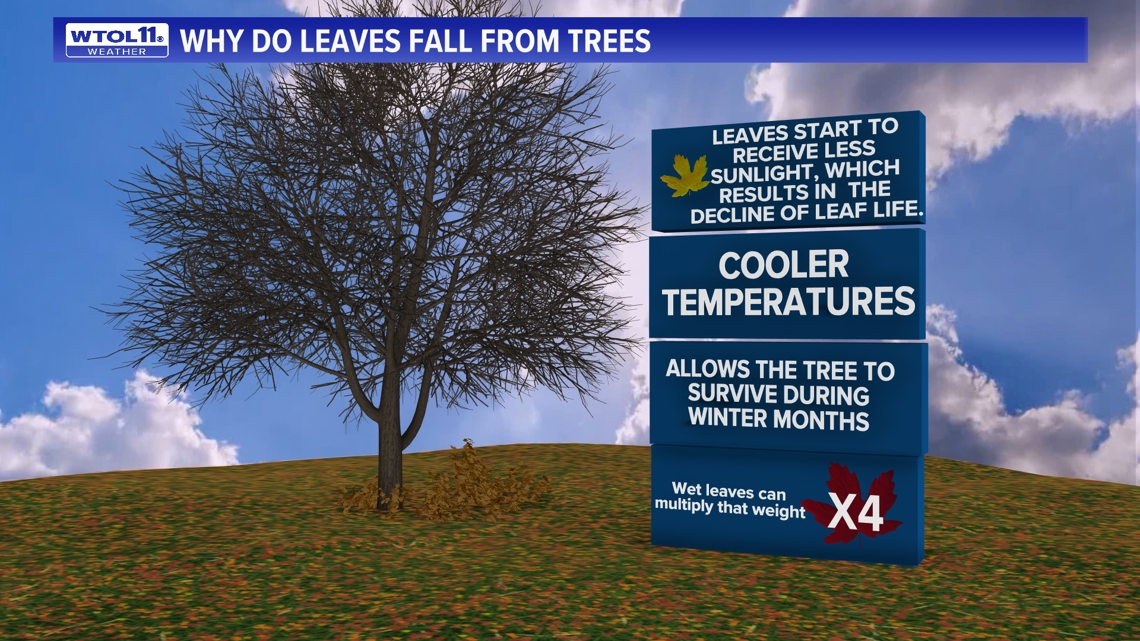
Stay safe when raking leaves
On average, a mature oak tree holds about 200,000 leaves on it throughout the year. That is certainly a lot of leaves for one tree! It takes about 360 leaves, actually, to weigh about 1 pound, but how much would those leaves weigh if all 200,000 fell off?
Well, one tree can hold up to 550 pounds worth of leaves, and the circumference of these leaves would be truly massive, given just how big each leaf could be. If you add rain to this, on average wet leaves could weigh four times heavier than dry leaves. Shoveling wet or snowy leaves can be a strenuous activity on your heart and body, all due to how heavy they can be.

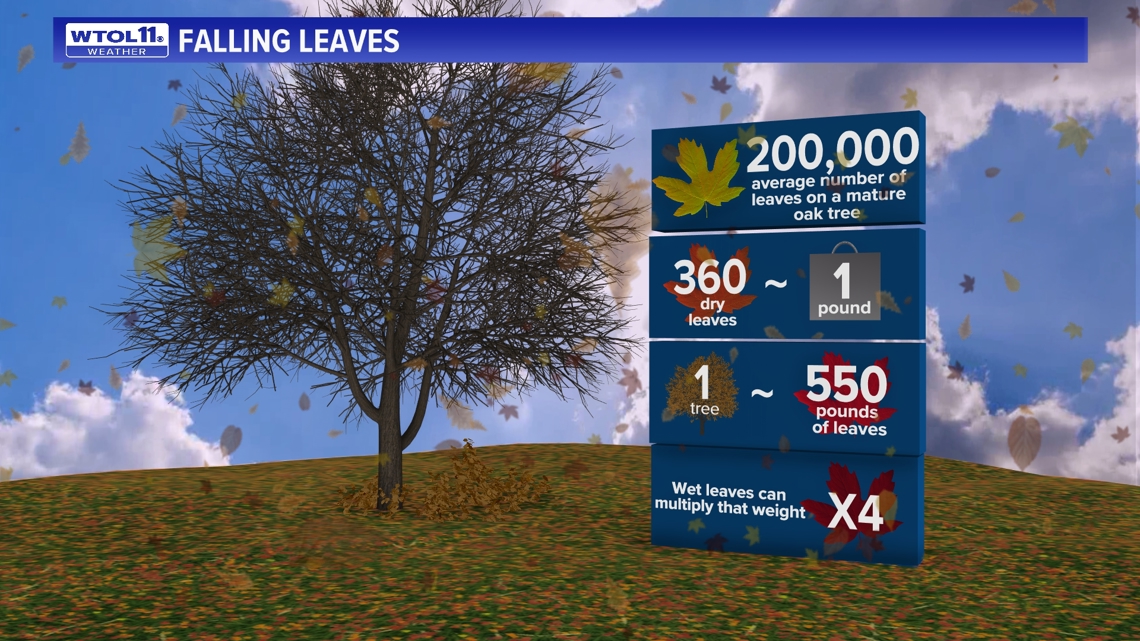
Burning leaves is bad for the environment
Sometimes getting rid of leaves can be hard if there are too many leaves to put out in a pile. In years past, many people burned leaves to get rid of them, but now we know that environmentally, that truly does impact our air quality negatively, and our very own health.
But, you don't just have to take my word for it. The Purdue University Extension Service notes that "leaf burning leads to air pollution and is a health and fire hazard. The smoke from burning leaves contains a number of toxic and/or irritating particles and gases. The tiny particles contained in smoke from burning leaves can accumulate in the lungs and stay there for years. These particles can increase the risk of respiratory infection, as well as reduce the amount of air reaching the lungs. For those who already suffer from asthma and other breathing disorders, leaf burning can be extremely hazardous."
And, it matters what condition the leaves are in when they are being burned, too. The Extension Service points out that wet or damp leaves produce more smoke than dry leaves because they burn slower than dry leaves. Even more concerning, the Extension says, is that burning these wet leaves can expose you to chemicals called hydrocarbons, which are known to be carcinogenic.
Although raking leaves can surely be annoying, doing the best you can to put them in a pile or calling a lawn service will surely help keep the environment safer.

